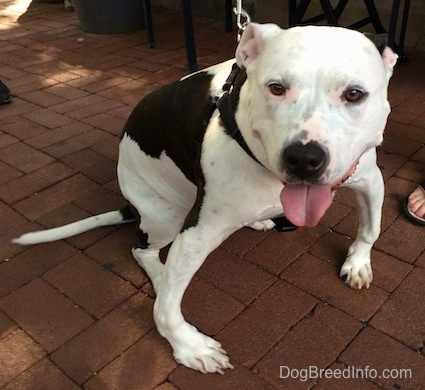
Just like humans, the structure of a dog’s body has a lot to do with its general, overall health. For example, if a human's legs are bowed out to the side, bowed inward or the spine is curved, we try and do what we can to correct the structure. Bad bone structure often causes pain and other health problems. This is an accepted fact when it comes to the human body. Not everyone thinks of this when it comes to dogs, however. This page gives examples of good and bad body structure in dogs to help you see what to look for when picking out a puppy. This page only gives general information. Check the standard of your breed to see its accepted bone structure.
The topline is the line formed by the withers, back loin and croup. It is the area from the base of the neck to the base of the tail on a dog. Most breeds are meant to have a level topline, meaning this area is flat. However, some breeds do have an arch that is accepted in their written standard, such as the Whippet.
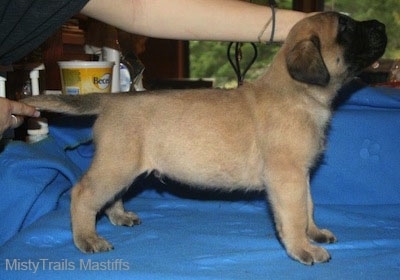
This Mastiff puppy has a good, level topline. The back from the neck to the base of the tail is flat.
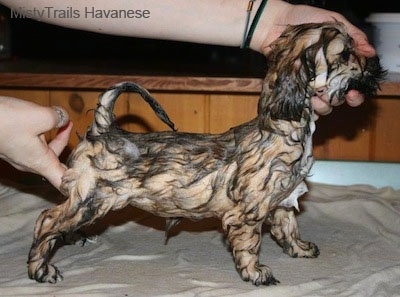
This Havanese puppy has a good, level topline. The back from the neck to the base of the tail is flat.
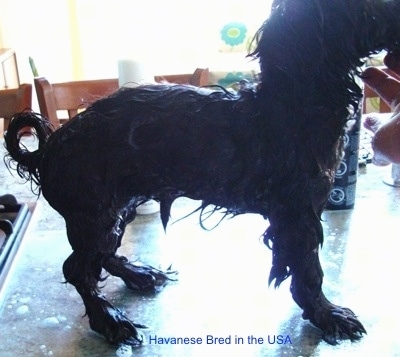
This is an example of a bad topline in a Havanese. The back is curved and not level.
The forelegs are the front legs of a dog. The legs in a dog should be straight and not bowed inward or outward. When a dog's legs are bent, just like a human, it can cause health issues such as arthritis.
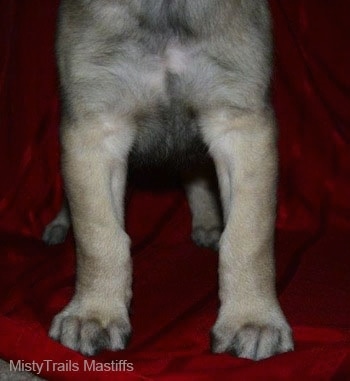
This Mastiff puppy has a good front line. The forelegs are nice and straight.
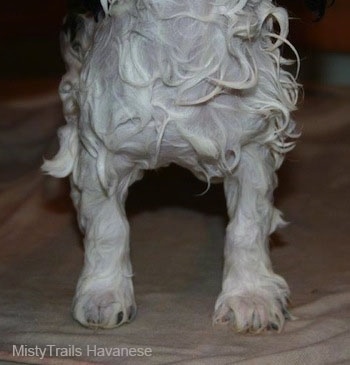
This dog also has a good front line. The forelegs are nice and straight.
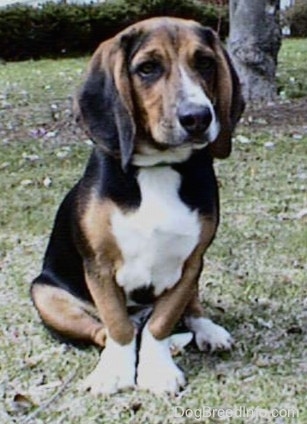
This Beagle has a bad front line. Notice how the Beagle’s forelegs are bent and not straight. If this dog were human we would consider it deformed.
Max the Basset Hound at 11 years old has a bad front line. Notice how his front paws turn outward rather than face front.

This dog has a bad front leg structure. The legs are bent and not straight.
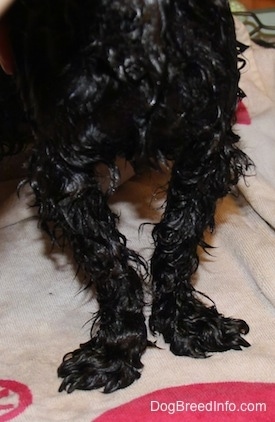
This dog has a bad front leg structure. The legs are bent and not straight.
The hindquarters are the back end of the animal. The back legs of a dog should be straight and not bowed in or outward.
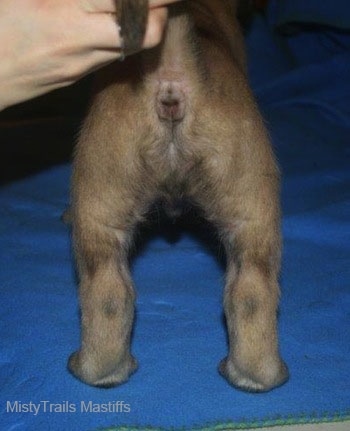
This Mastiff puppy shows a good back end. Notice how the back legs are straight.
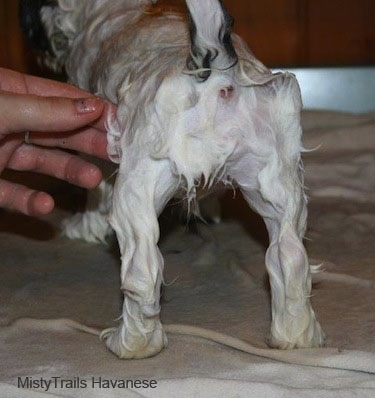
This Havanese puppy shows a good back end. Notice how the back legs are straight.
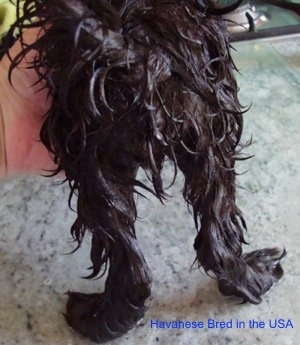
This is an example of a bad rear in a Havanese dog. Notice how the legs are bowed outward and the feet curve into the foot.

This is another example of bad body structure in a hound-type dog. The back legs should be straight, but they curve inward and then turn back outward near the paws.

Koa the Pit Bull / American Bulldog mix (sometimes called a Bullypit or Colorado Bulldog) at 3 years old—"Koa was born deformed with extreme bow legged-ness. It’s the ankle bone that has the issue, which causes her to walk on her outer feet and makes the curvature so severe looking. There is no surgery that can fix this. I think all of her weight looks like it’s being taken by the enlarged ankle bone area. Koa acted like she was in 7th heaven, happy as can be and totally enjoying my attention and affection. She relished in it. She is a total people lover."
Koa the Pit Bull / American Bulldog mix (sometimes called a Bullypit or Colorado Bulldog) at 3 years old. She was born with a bone structure deformity.
The Bite
A scissor bite is when the upper incisors just overlap the lower incisors, such that the rear surface of the upper incisors touches the outer surface of the lower incisors. An underbite is when the lower incisors extend beyond the upper incisors. An overbite is when the upper incisors overlap the lower incisors, leaving a gap between the teeth.
Most breeds are to have a scissor bite, but some breed standards accept or even consider it normal to have an underbite. It is usually not accepted to have an overbite in a dog.

This puppy has a nice scissor bite. The top teeth meet the bottom teeth.
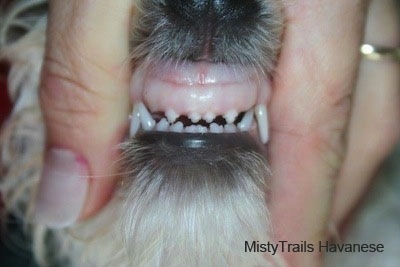
Example of a good scissor bite in a puppy
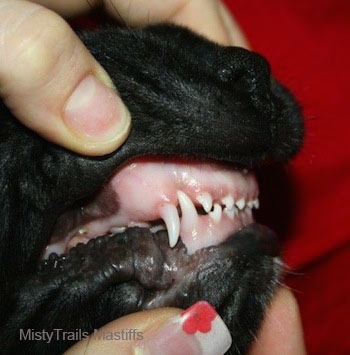
Example of a good scissor bite in a puppy
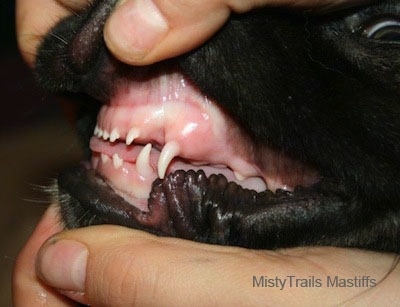
Example of a good scissor bite in a puppy
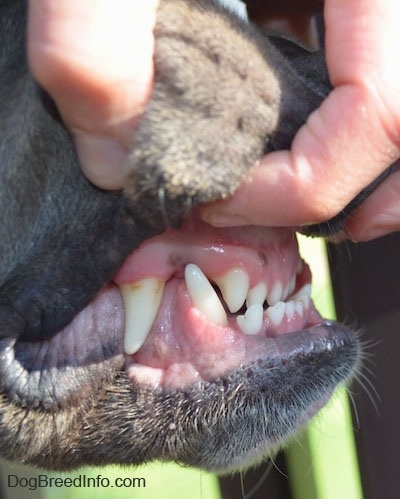
This dog has a small underbite. Notice how the top teeth are on the inside of the lower teeth.
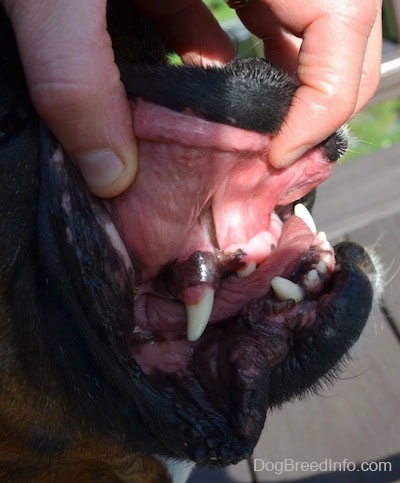
This dog has a large underbite. The top teeth are so far inward that the dog bites his own tongue. This dog has a hard time holding onto things with this mouth. Underbites this bad should never be accepted by anyone.
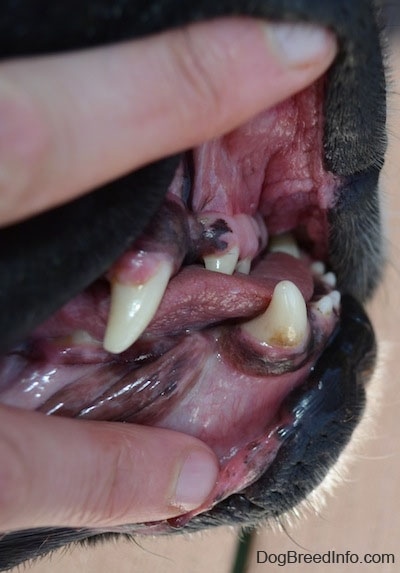
Dog with a very bad underbite
Dog with crooked teeth